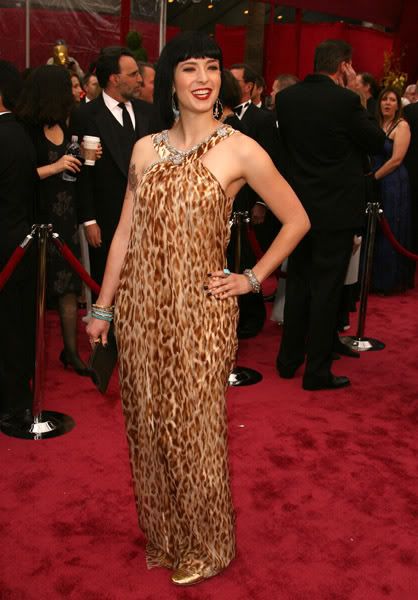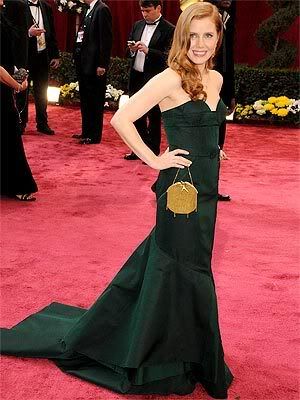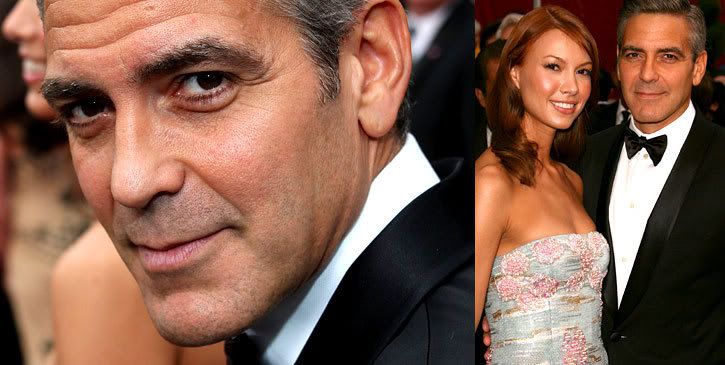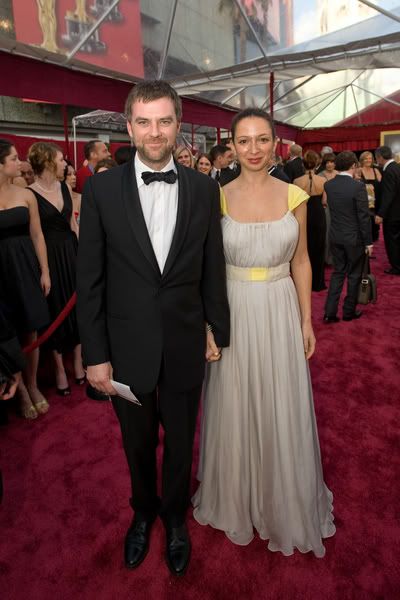There is a huge problem with fashion.
Like all arts, eventually it becomes part art and part business. I mean even fashion designers and models have to eat, well ok, bad example, but they have to pay rent for the appartments that house the closets where they store their clothes.
And as a business, business interests creep in and once that happens, it's only a matter of time before bad things start rearing their ugly head.
As I mentionned in a previous blog, fashion is also a language. A very powerful language that people listen to. It tells people what is beautiful and desirable and acceptable.
Well way back in the day, fierce and stunning beautiful models of colour used to stomp the runways. Girls like Iman and Beverly Peele and Naomi Campbell. Girls like Tyra and Veronica Webb and Alex Wek and Christy Turlington and Linda Evangelista and Kimora Lee ( believe it or not Christy and Linda are both LATINAS). Ethiopian and Somalian models used to RULE the runways like the Queens that they are. And I am sorry, that part of the world gives rise to women with the most amazing bone structures ever. Bone structures that photograph strikingly. Not only that, but these women have regal walks and posture. There was a reason why some of the most legendarily beautiful women in history like the Queen of Sheba , Cleopatra and Nefertiti were all African women.
I have undeniable African blood running through my veins. Do you think cheekbones like these and lips like these and hair like this came from my German or English ancestors? ( That is me in a Marina Rinaldi/Max Mara dress and jewelry by Vivienne Westwood).

No. I am a woman of colour. I am a woman of MANY colours. I am Native American. REALLY Native American. I have Toltec and probably Aztec and definitely Mayan in me. I have North African and Sub-Saharan African in me. I also have German and French and English and Spaniard and Italian in me. My mother's family came from a part of Mexico largely populated by former slaves imported from West Africa. And my great-grandmother Paz looked in her youth like a petite version of Halle Berry or Lena Horne, this was already in the late 1800's or turn of the 20th. Her daughter, my grandmother, looked like a cross of Joan Crawford, Lucille Ball and Rita Hayworth. And my mother looked like a cross of Maria Felix and Sophia Loren. That is what happens because of the tradition of "mestizaje", or combining multiple ethnicities. Which is something very common in Mexico because of the slutty and very racist Spanish colonists. People are socially encouraged to "dilute" their "coloured" ( be it Indian or African) blood in order to "pass" and become as white-looking as possible, because in Mexico, white is wealthy, desirable and beautiful. And that is a BIG problem. Marrying a white, European-ish foreign dude in Mexico is a more powerful status symbol than a Mercedes Benz or a Louis Vuitton bag.
But in the 70's and 80's things got a little bit better because we started seeing images of women of colour on fashion magazines. Of women who were NOT blue eyed and blonde and who also were beautiful.
But the era of the super-model has come and gone, despite Tyra's best efforts.
We are in an era of absolutely squalid, starved, generic and Dickensian Eastern European and British models. These barely mentruating 13-17 year old girls look like something out of a WWII movie depicting the horrors of war in Odessa or Kiev, or maybe the street urchins or dirty prostitutes of Jack The Ripper's days in Whitechapel. They basicaly look like they would perform oral sex for a bread roll. Not sexy and definitely not fierce. More like scary and sordid and sad.
And they are the only ones getting booked. The designers and agencies argument is that "generic, super thin, pale" white girls don't detract from the clothing. Au fucking contraire. They are so wretched looking that they are distracting and seriously, they make beautiful clothing look awful. They give you that sad and uneasy and vaguely repulsed feeling you get when you watch "From Hell" or "Sweeney Todd"
Like these girls who walked for Marc Jacobs and Marchesa:




How far are these girls from people in treatment for life-threatening anorexia

This is a photo of Ana Carolina Reston who died from anorexia. She is heavier in this photo than the girls that walked this year..

Or from war camp survivors?



Hardly any... Actually, the concentration camp survivors look "chunkier" than the models.
So these present day beauty role models are not only exclusively models of white woman's beauty ideals, they are representative of the criminal, deranged or pathological ways of the worst of white people. Because doing this to yourself is pathological. Imposing this unto others is criminal. Promoting this as desirable or chic is downright deranged.
The reason why the designers don't want to use models of colour is because women or colour have been less poisoned by society's constant pressure to hate yourself. Ethnic models tend to look well, almost like they eat a couple of times a week. And they walk with spirit, energy and passion. They look alive.
And I guess the designers and stylists and agencies think that people want to see corpses in their clothes. Because of course, white people's corpses are not distracting.
Here is a great article of the lack of racial diversity on the catwalks that I found via the wonderful Nick Verreos (http://www.uber.com/nickverreos/blogs/Fashion_Week_Hits_Diversity_Problem.html)
Fashion Week Hits Diversity Problem
By MEGAN K. SCOTT--Feb 8, 2008
..>..>..>..>
..>
 .. .. |
..>..>..>..>..>
NEW YORK (AP) --"What happened to all the black people on the runway?" asked model Tyson Beckford, who attended several shows at New York Fashion Week. "There are no blacks on the cats."
Naomi Campbell put it another way: "Women of color are not a trend. That's the bottom line."
And while Campbell wasn't invited to the shows this week and didn't attend, the supermodel may have been on to something. It seems that while the fashion industry was worrying about how skinny models were, it was neglecting another problem: how white they were. There were drops of color here and there, but with the exception of a couple of shows, the runways were lined with pallid, bony bodies.
"There used to be myself, Naomi Campbell, Veronica Webb, Tyra Banks," Beckford said. "There used to be a lot of us out there, but today a lot of the designers just aren't catering to black people."
In truth, this Fashion Week looked like about as diverse — or homogenous — as many before it. But if ever there should have been more people of color on the runway, the time was now.
The issue has been the topic of three panel discussions since September held by former model and agent Bethann Hardison. Diane von Furstenberg, president of the Council of Fashion Designers of America, sent a memo to its members encouraging them to create fashion shows "that are truly multicultural." The media has focused on the issue.
"I do believe it did have an effect on the shows," says Kyle Hagler, manager at IMG Models, adding that there were a couple of new, diverse faces. "Obviously there is still more that needs to be done."
Casting director Jennifer Venditti, owner of JV8Inc, says more ethnic models were used, but they were the same ethnic models as always. She says she only recognized a couple of new models.
"With the white girls, there's like a huge influx of people that you never saw before," says Venditti, who did castings for several shows, including Doo.Ri, Peter Som, BCBG and Rodarte. "I feel like it's always the same ethnic people."
Sean "Diddy" Combs made a statement by using only black models in his fall Sean John show on Friday. And other black designers, such as Tracy Reese, show diverse runways.
That's why Venditti says it's going to take a non-black designer to really make a change and embrace different colors and shapes. "A lot of times these girls are being judged on body type by someone of a different ethnicity," she says.
The late 80s and early 90s were seemingly a better time for black models, including Campbell, Banks, Webb, Beverly Peele and Karen Alexander. Before then there was Pat Cleveland, Naomi Sims, Iman and Beverly Johnson, the first black woman to appear on the cover of Vogue magazine in 1974.
While there isn't another Tyra or Naomi today, that's true across the industry. There are no big-name Christys or Giseles, either.
Gisele Bundchen, probably the last model who became a household name, helped usher in an era when Brazilian bombshells dominated the catwalk. That era has passed, even in Brazil, where critics complained earlier this year that Sao Paulo Fashion Week was full of models who were European in appearance.
On Forbes' 2007 list of the top fifteen earning models in the industry, only one — Liya Kebede — was black. The "in look" right now is white, says Holly Alford, a fashion historian from Virginia Commonwealth University.
"It's a white European girl look that is being made popular on the magazine covers," she says.
Still, Chanel Iman Robinson, who is black, is one of the most in-demand models this season. And Hagler hates to think that race is a trend.
"I think it's outrageous to think that we would exclude groups of people because they are not quote unquote fitting the trend," he says. "If it comes down to that, I would probably not work in this industry any longer. So hopefully this is not a trend. Hopefully this discussion has inspired people to take action."
There is a lot of finger-pointing over whose action that should be. Some blame the modeling agencies for not sending more ethnic models to casting calls. Others blame the designers for not hiring ethnic models. Then there are those who put the onus on the casting directors, who work for the designers.
Ivan Bart, senior vice president at IMG Models, says he sent a diverse group of models to the casting calls for this Fashion Week. One of the agency's Asian models, Emma Pei, has done several shows.
"In the end, it's up to the designer to make the ultimate decision on who they are going to cast for the show," he says.
Fashion designer Nick Verreos says he has asked agencies to send models of color only to have them send mostly white women. And Venditti, also director of "Billy The Kid," says there are so few ethnic girls at the casting calls that there are not many to choose from. Some of the models of color are eliminated because of fit or walk.
Still, she doesn't blame the agencies. She asks, why should an agency bring on lots of ethnic models if no one is calling to book them?
Verreos admits that some designers simply won't use models of color.
"I have heard rumblings that the girls of color take away from the garments, that they are so fierce and have so much of a persona, you notice them first as opposed to noticing the clothing," he says. "So there are a lot of designers who would rather have the clothing be noticed and have a pale background. I just don't think that's right."
The entire industry needs to take responsibility, says Neal Hamil, director of Elite Model Management North America, which is sponsoring the next Town Hall meeting.
"There really is not one group or component of the fashion community that is more guilty than others," he says. "We're all failing. There was a difference this season ever so slight. The better news is that everyone in the industry can also be part of the solution."
AP Fashion Writer Samantha Critchell and Anna Jane Grossman contributed to this report.






















































 ..
..









